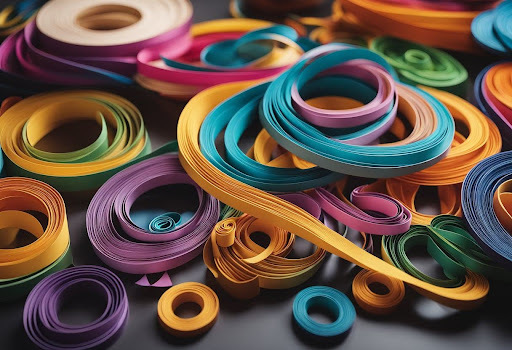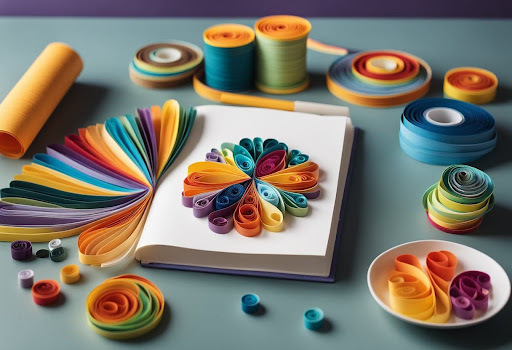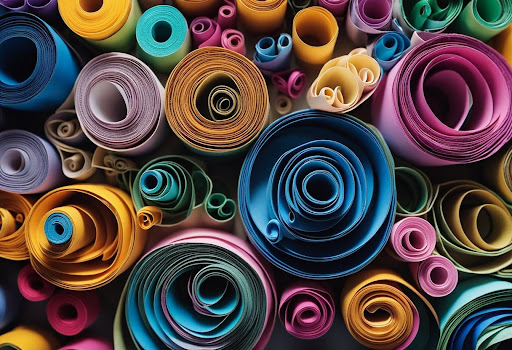What Is Paper Quilling? An Introduction to the Artful Craft
Paper quilling is a fascinating art form that involves rolling, shaping, and gluing thin strips of paper to create decorative designs. Traditionally, these paper filigrees have been used to adorn greeting cards, pictures, boxes, and even jewellery. The process begins with paper strips that are wound tightly into coils, which are then released and manipulated into various shapes. These shapes are then arranged to form intricate patterns and images that boast a three-dimensional quality.

The origins of paper quilling trace back to Renaissance Europe where it was practiced by nuns and monks who used the gilded edges of books to decorate religious objects. This practice, regarded by some as the precursor to modern paper quilling, repurposed waste material to create something beautiful. Today, it has evolved into an art form that is embraced by crafters worldwide. With the rise of social media, quilling artists have been able to share their work and connect, creating robust communities that foster creativity and collaboration.
Key Takeaways
- Paper quilling is an art that creates decorative designs using rolled paper strips.
- Originated during the Renaissance, it was used for decorating religious items and is now popular worldwide.
- Quilling communities online connect artists and encourage sharing of techniques and designs.
The History of Paper Quilling

Paper quilling, also known as paper filigree, is a form of craft grounded in the renaissance period. Originating in Europe, aristocrats and nuns embellished religious objects and furniture with delicate quilled paper shapes. It is believed that early quilling was practised by nuns, who used strips of the gilded edges of books to create simple but exquisite designs.
In the 18th century, paper quilling became popular as a leisurely pastime among gentlewomen. They fashioned decorative panels, often mirroring the ironwork of the day. These creations would then adorn tea caddies, coat of arms, and picture frames, demonstrating both affluence and skill.
The art of quilling spread throughout Europe and across to the Americas. During the Colonial era, quilled paper items were a common sight in affluent homes where women would gather to practice quilling. This art form saw a decline in the post-industrial age with the advent of mass-produced decorative items.
In recent years, paper quilling has seen a resurgence. With 21st-century tools, techniques, and materials, paper quilling is now embraced by individuals seeking unique decorative pieces or simply enjoying it as a soothing hobby. Our appreciation for handicrafts has enhanced quilling's profile, fostering a new generation of paper quillers who keep the tradition alive and evolving.
Essential Tools for Paper Quilling

In paper quilling, having the right tools can enhance your crafting experience and improve the precision of your designs. Here, we outline the must-have instruments for any quill artist.
Slotted Quilling Tool: This is the quintessential tool for beginners. The small slot at the tip makes it straightforward to curl the paper strips.
Needle Tool: For more advanced quillers, a needle tool offers increased control, allowing for tight coils and intricate manipulation of the paper.
Quilling Paper: Varied in colour and size, these pre-cut strips are the foundation of your quilling projects. We suggest a range of widths from 1.5mm to 10mm for diversity in your creations.
Tweezers: Precision is key in quilling. Tweezers enable you to handle and place delicate coils with ease, without disturbing other elements of your design.
Curling Coach: This accessory aids beginners in achieving even curls and coils—simply insert the tool into the quilling tool to maintain consistent tension.
Circle Sizer Ruler: This helps in gauging the size of your coils, ensuring uniformity across your work when needed.
Glue: A fine-tip applicator is ideal for applying small amounts of glue precisely, avoiding mess and wasted adhesive.
Here's a concise list of other accessories that can be advantageous:
- Scissors: For crisp, clean cuts.
- Quilling board: To pin and shape your designs.
- Quilling comb: For creating different textured effects.
- Crimper tool: To add texture to the paper strips.
These tools form the essential kit for any aspiring or seasoned paper quilling artist, enabling you to turn simple strips of paper into stunning decorative pieces.
Notable Paper Quilling Artists

- Yulia Brodskaya
Known for her innovative approach to quilling, Yulia Brodskaya combines paper quilling with typography and has worked with numerous international brands. - Senaida Gonzalez
She is recognised for her detailed quilled portraits and has a unique ability to capture human features using paper strips. - Manuela Koosch
Manuela is admired for her modern quilled designs and has contributed to the art form through workshops and exhibitions. - Philippa Reid
A British artist known for her intricate quilled creations navigating both traditional patterns and contemporary designs.
|
Artist |
Notable Works |
Style/Contributions |
|
Yulia Brodskaya |
Quilled typography and commercial works |
Bridged gap between paper art and graphic design |
|
Senaida Gonzalez |
Quilled portraits |
Depth and texture in capturing human expressions |
|
Manuela Koosch |
Modern quilled art pieces |
Workshops and education in modern quilling techniques |
|
Philippa Reid |
Traditional and contemporary quilled art |
Promotion and preservation of traditional quilling arts |
These artists represent a mere fraction of the talent within the paper quilling community and have made significant contributions to popularising and advancing this delicate art form. Their work not only demonstrates the versatility of paper but also serves as inspiration for both new and experienced quillers worldwide.
Connecting with Other Quillers

In the world of paper quilling, collaboration and sharing ideas can be highly beneficial. We've set up various platforms to help you connect with fellow quillers and get inspired. Take a look at our suggestions for engaging with the quilling community:
- Online Forums and Groups: Join dedicated quilling forums and social media groups. These spaces provide the opportunity for show-and-tell, asking for advice, and participating in challenges.
- Quilling Workshops and Classes: Keep an eye out for local workshops and classes. Not only is this a great way to learn new techniques, but it's also perfect for meeting quillers in person.
- Quilling Guilds and Clubs: Seek out local or national quilling guilds and clubs to become a member. These organisations often organise events, exhibitions, and meet-ups.
Finding Inspiration and Resources
- Craft Blogs and Websites: Follow bloggers who specialise in quilling. They often offer free patterns, tips, and tutorials to try out new projects.
- YouTube Channels: Subscribe to quilling artists on YouTube for visual guides and step-by-step project walkthroughs.
- Pinterest Boards: Create or follow Pinterest boards focused on quilling for a constant stream of visual inspiration.
Sharing Your Work
- Exhibitions and Fairs: Participate in craft exhibitions and fairs. Showcasing your work can lead to meaningful connections.
- Online Marketplaces: If you sell your quilling art, platforms like Etsy provide a community of crafters and the potential for collaboration.
Our mantra is to build a supportive and creative community within the quilling world. By sharing experiences, we all grow together as artists.


